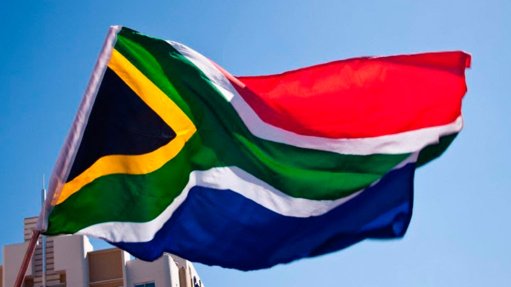The Just Energy Transition Transaction in South Africa
Sometimes the ‘impossible’ seems far-fetched and unrealistic, but it can be on the cusp of happening, even if it still has some journey to cover. This is illustrated by the history of the Just Energy Transition Transaction (JETT), which has many dimensions and offers many lessons.
I will share here some vignettes from a bird’s-eye view and the ruminations I have been privy to, having had the good fortune of being a fly on the wall.
The script of the JETT was written by many people – some known to the universe and others hidden from the public eye.
It is said that the loudest are often not the ones that really pull it off in the end – it is the quiet diplomat, the person with the nose for realpolitik, who does the trick. In the end, what was fashioned as the JETT is a formula for a way forward, with the full recipe still to be completed.
What is on paper – not the real deal yet – is an expression of interest to talk about and take forward this new venture which the world is looking at with great keenness and in some cases not even waiting for this thing to be complete but to mimetically try something new in another place and context. Let not irony then prevail, for the place where the idea was germinated fails to conclude and then others – who learn from the JETT – beat a much faster path towards their own JETTs.
All new ideas evolve from a chaos of ideas, competing rhythms and interests. Eventually, historical goalposts such as COP26 narrow the channel in which the political and technical converge in often mysterious ways that take time to fully understand and appreciate. We had a result but we are not always sure how it got to this point.
Any grand idea that is transformative can happen fast or slow. The JETT itself, which originated as a technical concept – first as a Just Transition Transaction – was developed and given flesh by Meridien Economics, a consultancy-cum-think-tank, and later gained momentum and a life of its own within State-owned electricity utility Eskom.
Eskom itself established a Just Energy Transition Unit led by very capable people. The Just Transition is the dominant policy push in South Africa’s context – linking climate issues with the broader economy – with the Department of Mineral Resources and Energy rolling out its own plans for a JETT in late December.
Meridien Economics proposed a sort of ‘debt for climate’ swap to fix Eskom’s balance sheet but what evolved out of Eskom’s own technical process and was eventually approved by the South African Cabinet and government is a strategic infrastructure investment programme that supports a build programme for clean energy as coal is phased out.
The pace of delivering the various items comprising the programme depends on the softness of the climate finance offer and a credible implementation plan, the performance of which will dictate the rate of drawdown from the JETT Fund or finance facility.
The institutionalisation of the JETT is a historical bend in a road that is etching a permanent political and policy infrastructure that is inadvertently making South Africa a leading emerging economy in the world in mapping out a just transition lens as it grapples with how to manage a complex and contentious energy transition.
The most important thing about the JETT is that the JETT has never been and never was a foreign band-aid over our challenges but a home-brewed idea that attracted interest from foreign partners.
Whichever way we look at it, South Africa is too dependent on coal; we need a more resilient and less carbon-intense electricity system. South Africa’s modernisation and future trade relations will be influenced by the level of carbon intensity in the country. There is also that added future threat: technological change will make carbon-based technologies somewhat stuck in the mud, if not obsolete, in the long term.
There are three things about the JETT that stand out.
The first is that the JETT is a special ringfenced infrastructure investment programme of scale that can be catalysed by climate finance but is not solely dependent on it. The climate finance option has to be better than other options available to South Africa, given that the country has mature capital markets and has largely funded several rounds of renewables programmes, drawing from domestic sources of finance with an excellent renewables energy procurement model.
Secondly, the JETT represents a structural shift in the energy sector that has ramifications for the whole economy. It has the potential to entrench a new path dependence – albeit a cleaner one – that crowds out coal and drives new types of infrastructure investment and services. This will impact on other sectors, jobs and the evolution of the hydrogen economy and electric vehicles as new pathways for industrial capability.
Finally, while attracting some useful catalytic funds, the JETT will also need to be supported by other policy instruments, such as reforms to the South African Reserve Bank’s macro prudential policies and transparency in the financial and nonfinancial sectors in terms of their commitments to carbon- intensive investments. The National Treasury will have to move beyond a narrow scope of sustainable finance measures and a minimalist carbon tax regime to consider other fiscal reforms that cushion against what is likely to be a uneven and difficult transition process driven by millions of unpredictable decisions by State entities, private firms and households.
Article Enquiry
Email Article
Save Article
Feedback
To advertise email advertising@creamermedia.co.za or click here
Comments
Press Office
Announcements
What's On
Subscribe to improve your user experience...
Option 1 (equivalent of R125 a month):
Receive a weekly copy of Creamer Media's Engineering News & Mining Weekly magazine
(print copy for those in South Africa and e-magazine for those outside of South Africa)
Receive daily email newsletters
Access to full search results
Access archive of magazine back copies
Access to Projects in Progress
Access to ONE Research Report of your choice in PDF format
Option 2 (equivalent of R375 a month):
All benefits from Option 1
PLUS
Access to Creamer Media's Research Channel Africa for ALL Research Reports, in PDF format, on various industrial and mining sectors
including Electricity; Water; Energy Transition; Hydrogen; Roads, Rail and Ports; Coal; Gold; Platinum; Battery Metals; etc.
Already a subscriber?
Forgotten your password?
Receive weekly copy of Creamer Media's Engineering News & Mining Weekly magazine (print copy for those in South Africa and e-magazine for those outside of South Africa)
➕
Recieve daily email newsletters
➕
Access to full search results
➕
Access archive of magazine back copies
➕
Access to Projects in Progress
➕
Access to ONE Research Report of your choice in PDF format
RESEARCH CHANNEL AFRICA
R4500 (equivalent of R375 a month)
SUBSCRIBEAll benefits from Option 1
➕
Access to Creamer Media's Research Channel Africa for ALL Research Reports on various industrial and mining sectors, in PDF format, including on:
Electricity
➕
Water
➕
Energy Transition
➕
Hydrogen
➕
Roads, Rail and Ports
➕
Coal
➕
Gold
➕
Platinum
➕
Battery Metals
➕
etc.
Receive all benefits from Option 1 or Option 2 delivered to numerous people at your company
➕
Multiple User names and Passwords for simultaneous log-ins
➕
Intranet integration access to all in your organisation


















